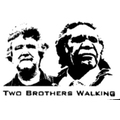First Contact
28/11/13 07:25
I was raw with grief from the sudden death of my mother when I first visited a traditional desert community. I lived in Newcastle and worked as a school teacher at the time and had the opportunity to spend a week in desert country during the school holidays. The Sydney Olympics were on, and I wasn’t the least bit interested.
I got a flight on the four seater mail plane and touched down around mid day. As I walked the half kilometre to the community I came across kids playing on the road, riding bikes, eating bush tomatoes that grew prolifically after an unusually wet season, then moving on with their games. Some girls were playing a marriage partner game based on the elaborate kinship system that preferred certain combinations of skin names. I wasn’t to understand the significance of this until much later. No one spoke more than a word or two of English. I knew nothing of Aboriginal languages.
I got a flight on the four seater mail plane and touched down around mid day. As I walked the half kilometre to the community I came across kids playing on the road, riding bikes, eating bush tomatoes that grew prolifically after an unusually wet season, then moving on with their games. Some girls were playing a marriage partner game based on the elaborate kinship system that preferred certain combinations of skin names. I wasn’t to understand the significance of this until much later. No one spoke more than a word or two of English. I knew nothing of Aboriginal languages.
By and by some boys on bikes rode up and asked me who I was, “What’s your name , mister?”
“David,” I said.
“Oh.”
Then again a little bit later, “What’s your name, mister?”
Same kids, same question over and over. I couldn’t work it out. Why parrot the same question over and over? I was baffled and displaced. It’s like I was nobody in a foreign country knowing nobody apart from my friend who was elsewhere occupied. It was at that moment it dawned on me that Australia wasn’t the place I thought it was.
Later I realised that the kids where asking me, “What’s your skin name?” and had I been able to answer that, everything would have been different. I would no longer be a stranger but a skin name would immediately let everyone know my relationship to them, at least in broad terms, my relationship to country and so on and so forth. But of course, I really was a stranger, a visitor an intruder. I knew less about these people than the youngest in the community, and I knew that were thousands of these communities through the central and western desert. This was beyond the outback.
on moving to Adelaide some years later, I had the opportunity to visit communities on the Aṉangu Pitjantjatjara Yankyuntjatjara Lands of South Australia to film what would become Two Brothers Walking. I met Murray and Wititji George at Pukitja and sat down with the Tjilpis (senior men) as they expressed their hopes and dreams for their communities and people to a delegation of trade union secretaries on a fact finding mission. Most of the conversation was in Pitjantjatjara that Murray translated.
After the meeting, one of the Tjilpis beckoned to me, and started a conversation in fairly clear english. I understood the words well enough but only had the flimsiest grasp of what he was talking about. As he spoke he drew patterns with his finger on his outside leg below the calf muscle. He said, “I can see things that you can’t see. I’m a witch doctor. I can see that Wanampi (Rainbow Serpent), he’s here with us now. He’s going up to everyone and having a look at everyone, black fellas, white fellas, everyone. He’s a happy fellow moving from one to another, as if to say, “here I am, I am here.” He moves up from Sydney, from Canberra, from Melbourne, everywhere moving over the whole country. I felt the power emanating from the old man, I was entranced.
The full significance of all this only became clear when the Two Brothers Walking documentary years later.
When he finished talking, I felt the mood shift, like coming out of a cinema, or a dog shaking off water to dry itself, setting me on an adventure that continues to this day.
I have found it difficult to get started writing about these things. The reference points that would help us westerners understand Australia’s tribal people simply don’t exist. The usual assumptions don’t hold. We have to get back to the essence of what is to be a human being, what does it mean to be a free person, where did we come from to build a meaningful relationship.
blog comments powered by Disqus
